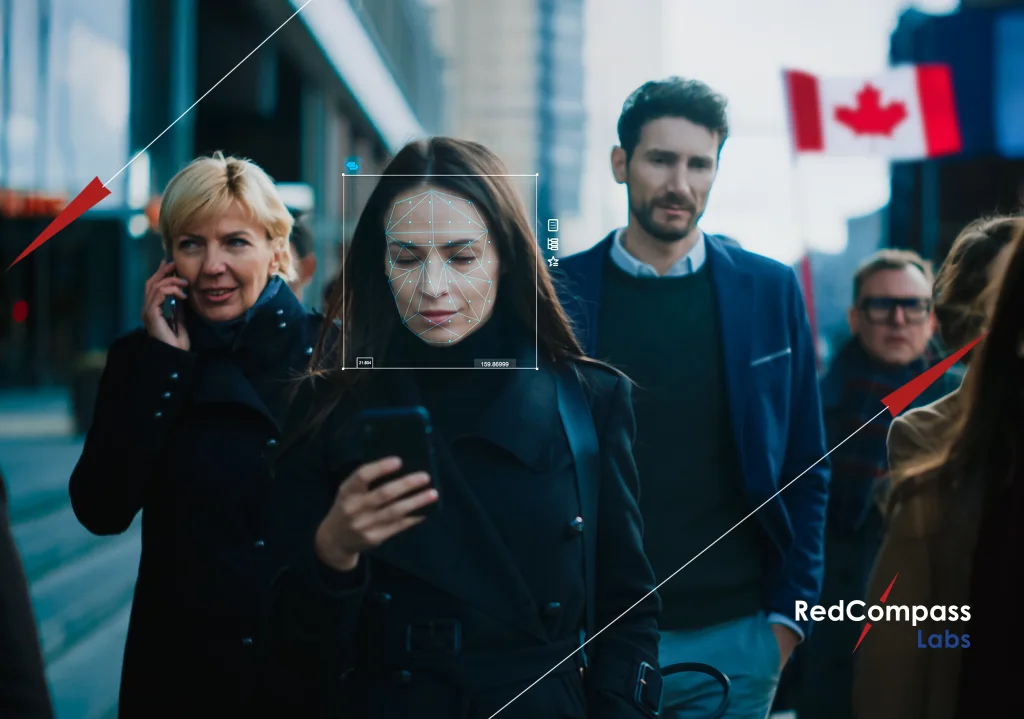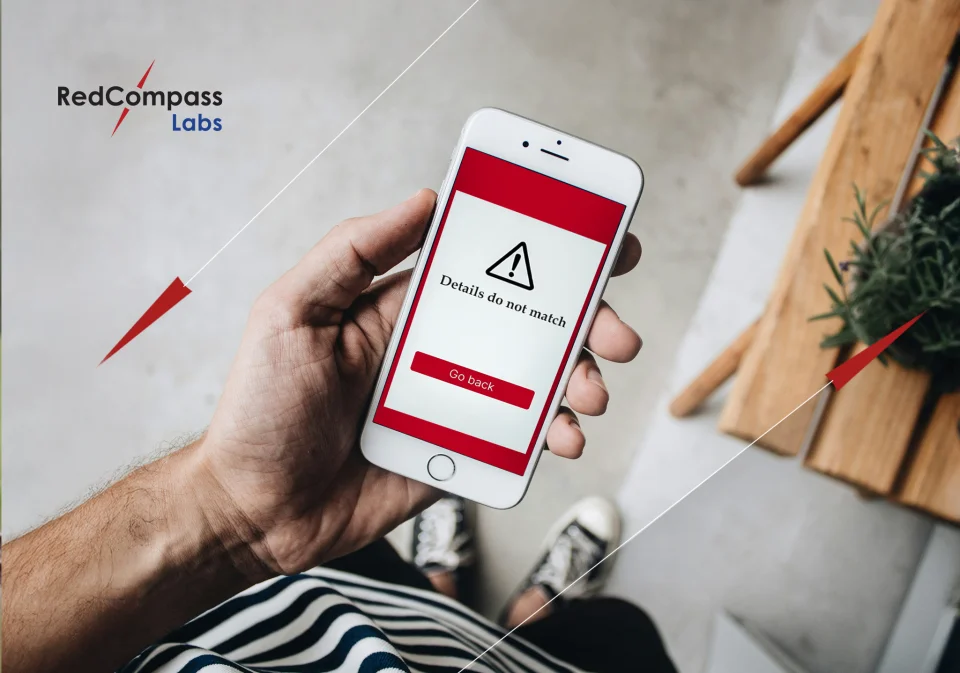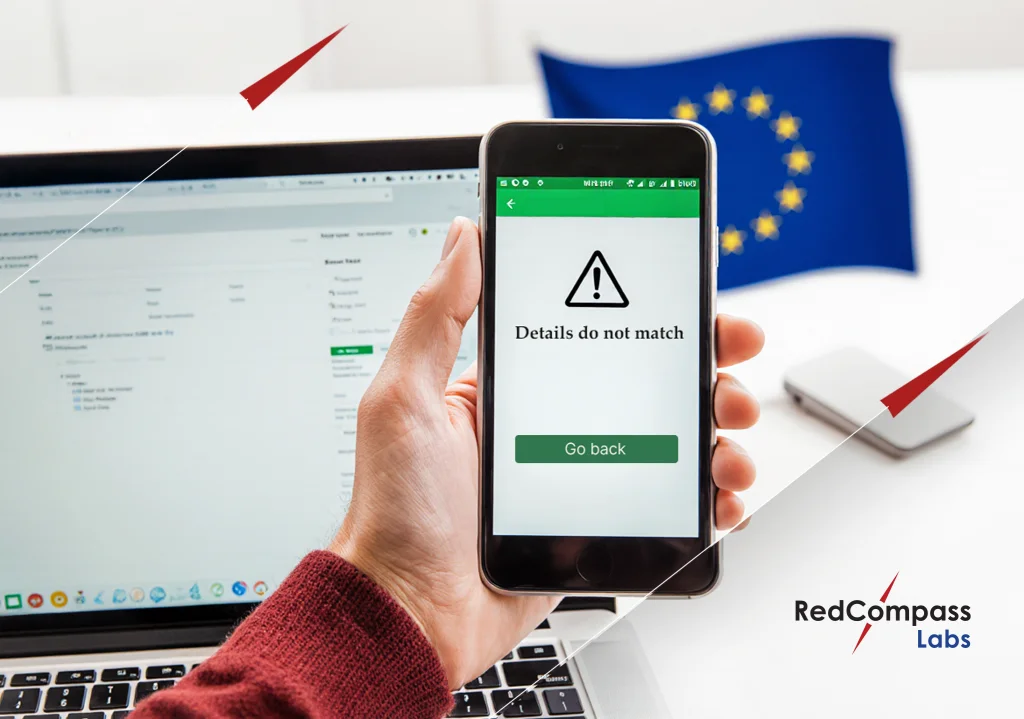You’re at a restaurant, out for dinner with some friends. You’ve had a beautiful meal, and the time has come to pay. The bill arrives and to make life easier for the waiter, one of your friends offers to settle on their card. The rest of you agree to send your portion of the bill directly to your friend’s account. You open your banking application, move funds from your savings account to your current account, and then send your friend the money. It’s transferred instantly. Your friend pays for the bill in full and adds a tip for the restaurant staff.
Instead of waiting days or weeks, the restaurant is also paid on the spot. The restaurant pays their butcher, fishmonger and veg supplier the next day, and they’re paid in real-time, too. Each business uses the money to pay their staff – instantly – and the staff go out and spend their money at other businesses.
There are no merchant fees or hidden costs. That means, on top of the slick customer experience, businesses get more autonomy, money, and better cash flow, which are all passed on as benefits to the customer.
In this guide to real-time payment use cases, we explore real-time payments use cases – person-to-person (P2P), person-to-business (P2B) payments, business-to-business (B2B) and business-to-person (B2P) – in detail and discuss the benefits and challenges banks and financial institutions face implementing them. You’ll learn:
- Real-time payment use cases for P2P, P2B, B2P and B2B payments
- Why banks like to offer real-time payments
- How P2B payments can help cash-based economies
- Why real-time payments may put global card networks like Visa and Mastercard on the back foot
Real-time Payments Use Cases
Real-time payments – or instant payments as they are otherwise known – are payments that are cleared and settled, instantly. That’s usually within a 10-second window, but it can be longer depending on the bank and country you’re in. Real-time payments are processed around the clock, 24/7, 365 days a year. They’re often free to use for businesses and consumers.
For that reason, real-time payments have a wide range of use cases. Let’s explore them.
Person-to-person (P2P) real-time payments use cases
Person-to-person (P2P) real-time payments – also known as peer-to-peer payments – are real-time payments between individuals. Anytime you send money to yourself or someone else you’re making a P2P transaction. That could be sending money from your savings account to your current account (a Me2Me transaction) or paying your friend the money you owe them for dinner, as we saw in the example above. That means there are an infinite number of use cases.
You could send money to your niece for their birthday, go halves on a taxi with your friends, or buy a dining table on Facebook marketplace.
These account-to-account transfers are often the first real-time payment product banks and wallet providers make available to their customers. There are no interchange fees, which means P2P real-time payments are free for customers but don’t make the bank any money.
If P2P real-time payments don’t generate profit, what’s in it for banks?
Consumers today expect to make payments wherever they are, whatever time of day. As a bank, you can either meet the demand and offer real-time payments or have your lunch eaten by other banks who will.
You can offer P2P real-time payments without cannibalizing any existing revenue streams, iron out any kinks in your real-time payments offering, and quickly build a big user base. Once you have your audience, you can leverage real-time payments as a low-cost option to card payments. From there, you can start to offer other banking products and services. A real-time payment today could be a loan tomorrow and a mortgage the day after.
P2P payments are relatively small, which limits the risk to payment service providers (PSPs). And real-time payments can be cleared without the availability of real-time settlement rails. That makes P2P real-time payments a great place to start your real-time payment journey.
Other P2P real-time payment use cases
- Splitting Bills
- Gifts and Celebrations
- Loan Repayments
- Emergency Assistance
- Virtual Marketplace Transactions
Benefits of P2P real-time payments
Immediate accessibility: Real-time payments can be a lifeline in an emergency, last-minute plan or if you simply need to pay your friends. Funds are transferred instantly, relieving pressure from tricky situations.
Available 24/7: The days of waiting for banks to open are over. Real-time payments are processed around the clock, 24 hours a day, 365 days a year. This is great for making off-the-cuff transfers.
Better cash flow: Person-to-person (P2P) real-time payments make transferring money effortless. You can move money between your personal accounts (Me2Me transactions) or send money to friends and family, instantly.
Global reach: Geographical banking boundaries blur with real-time payments. You can transfer money to anyone. Sending money to a friend or family member overseas becomes as straightforward as a local transaction, while facilitating financial inclusion at the same time.
Trust and transparency: Confirmation notifications – whether positive (for a successful transaction) or negative (for a failed one) – are a key component of many real-time payment schemes. Prompt communication helps to build trust.
What are some of the challenges of offering P2P real-time payments?
Banks can run into issues offering person-person (P2P) real-time payments when there are multiple P2P real-time payment rails within the market.
P2P real-time payments rails are often closed-loop systems; they are not natively interoperable. That means the P2P real-time payment system at Bank A will not communicate with the P2P real-time payment system at Bank B.
The challenge for banks is to figure out how to make their P2P real-time payment rail communicate with other P2P real-time rails in the market, while shielding their customers from the complexity. They must give the illusion of interoperability to create an enjoyable user experience.
This is made more challenging by the fact that not everyone has a bank account (which creates a need for pay-to-card and pay-to-mobile solutions).
Person-to-business (P2B) real-time payment use cases
To understand person-to-business (P2B) real-time payment use cases, let’s reconsider our restaurant example above.
The restaurant industry has high revenues and razor-thin profit margins. That means money is tight. Cash flow is extremely important, as are relationships with suppliers.
In traditional person-to-business payments, card networks take a percentage of each transaction as an interchange fee. Every card transaction that is made costs the restaurant money, and restaurant owners usually must wait two to three days after taking payment for any money to reach their account.
When it arrives, they’ve lost a chunk to interchange fees. Money that could be used to pay staff, suppliers, rent, and bills goes to the payment processor. Not only is the restaurant worse off in real terms, but waiting for the money to arrive can create pressure with suppliers and staff who need to be paid.
P2B real-time payments are a solution – and in some cases, a lifeline – for merchants everywhere who are tired of paying interchange fees and waiting days for their money to arrive. The faster the payment, the faster the business is paid, the faster it can reinvest, and the faster it grows.
What about the bank’s perspective?
As a bank, P2B real-time payments are an opportunity to fight back against global card networks who have dominated the electronic payments space. Regulators in the EU have encouraged the transformation of banking infrastructure in recent years, to meet the demands of our ‘always-on’ economy. All EU banks will need to be able to send and receive instant payments in the EU, for free and around the clock, by the end of 2025. This provides a winning advantage for banks over the likes of Visa and Mastercard and presents a once in a generation opportunity to capitalize on their investments.
See video: Political agreement reached between Parliament and Commision
How do P2B real-time payments impact cash-based economies?
Cash is not free – it must be kept safe. Businesses can be burgled, and merchants mugged on the way to the bank. Security and transportation investments are essential.
Cash-based economies like India, Brazil and Thailand have proven to be a fantastic use case for real-time payments. UPI in India, for example, uses a QR-code based system. Anyone with a smartphone, digital banking, and access to the internet can make a secure UPI payment to a business in seconds. This reduces the reliance on cash, and the security and transportation costs that go with it. Real-time payments also automatically generate receipts in a standardized format, which reduces the need for manual back-office work and makes dispute resolution much easier.
Other P2B real-time payment use cases
- Online Shopping
- Subscription Payments
- Bill Payments
- Service Payments
- Event Registrations
P2B real-time payment benefits:
Fast Transactions: Nobody likes to wait for money. Real-time payments ensure that when a consumer pays for a product or service, the business receives the funds promptly.
Enhanced Cash Flow: Real-time payments can be a lifeline for businesses (particularly smaller ones) by ensuring a steady cash flow. This can help businesses manage their finances better to grow their business, but it also helps gig workers (like buskers).
Real-time Confirmation: For consumers, the assurance that their payment has been received by the business in real-time can enhance trust and confidence in the purchasing process.
Seamless International Transactions: For businesses that cater to an international clientele, real-time payments simplify cross-border transactions, making global commerce feel local.
Improved Customer Experience: With quicker payment processes and immediate confirmations, businesses can foster brand loyalty and encourage repeat purchases.
What challenges do banks face when offering person-to-business (P2B) real-time payments?
Building and scaling a payment scheme without interchange schemes is extremely difficult, largely because global card networks like Visa and Mastercard dominate the market.
But as we’ve discussed, the EU is attempting to tackle this issue to reduce the power of large foreign businesses. The European Payments Initiative is building a card-like scheme on top of real-time payments rails, as well as adapting interchange and chargeback processes. And the EU is mandating that all banks must be ready to send and receive real-time payments by the end of 2025. This will level the playing field between PSPs and card networks.
Though it won’t be easy; getting your legacy core banking system ready for a higher volume of payments that are processed 24 hours a day, interoperable, standardized, and shielded from fraud and security issues, is a big task. But if the real-time payments rails are combined with Open Banking solutions, banks can provide products to their customers that compete with traditional card payments.
Business-to-business (B2B) real-time payments use cases
The global business-to-business (B2B) market is over five times the size of the business-to-consumer (B2C) market. Trillions of dollars fly around the world each year to keep the world’s economy moving. The transactions are bigger, regularly happen across borders and are often time-sensitive.
That makes them complex. B2B payments must navigate compliance, sanctions, taxes, time zones, currencies, and local market practices. Large corporations use legacy systems to send and receive their money around the world, making things even trickier. Waiting too long for funds to arrive can cause issues with supplies, business relationships, trust, and solvency. Every business in the supply chain has its own set of pressures, and ripples are often felt down the line if one business or sector is in trouble.
Which makes global, cross-border industries like manufacturing and construction a prime use case for real-time payments. The construction industry had more insolvencies in the third quarter of 2023 than any other sector in the UK. Cash flow is crucial, as is the price of raw materials. B2B real-time payments ensure businesses get paid in real-time, so they can pay their suppliers on time, too, building trust and strengthening relationships in the supply chain.
Even on a local level, B2B real-time payments are potent. In the restaurant example above, the owner can pay his suppliers instantly. The fishmonger, butcher and veg supplier can also pay their suppliers (local or overseas) in real-time, who pay their suppliers, and so on.
This is particularly powerful after a quiet trading week when money is tight. If the restaurant has cash flow issues, the fishmonger may stop sending their produce until they’re paid. If that happens, the restaurant can’t make some of its dishes, which may damage the business’s reputation. Worse still, they may not be able to open. Real-time payments help to lubricate the chain to keep cash flowing and businesses moving.
What’s in it for banks?
As a bank, offering B2B real-time payments adds a stickiness to the relationship with your business banking clients. You can combine them with value-add services (like invoicing solutions) which can be monetized. The benefits of B2B real-time payments are vast, for both SMBs and corporate clients, which makes your portfolio stronger and more enticing. The better and more plentiful your business banking relationships, the larger the sums of money that are deposited, transferred, loaned, and paid to your organization. B2B real-time payments can be a big revenue driver.
Other B2B real-time payment use cases
- Supplier payment
- Employee Expenses
- Inventory Replenishment:
- Contractor Payments
- Loan Repayments
B2B real-time payments benefits:
Keep cash flowing: Payments are instant, which keeps cash flowing and businesses moving. This is important for every business, but even more so for small businesses and those with time-sensitive payments.
Enhances trust: Paying businesses on time builds trust. Your partner and suppliers can be sure they’re going to get paid immediately with B2B real-time payments.
Reduces admin: Payment flows can be automated, with receipts and payment notifications as a standard practice. This eliminates the need for manual processes, freeing up time and money which can be used to grow the business.
Cash pulling: Large organizations can consolidate their funds into a centralized account for easier cash management. This centralized account can easily transfer funds to departments with temporary liquidity needs, to keep the cogs turning. Consolidation enhances cash utilization, reduces costs, and gives even better control over cash flow.
What challenges do banks face offering B2B real-time payments?
Much like banks, large organizations rely on legacy infrastructure, which can be difficult to integrate B2B real-time payments into.
On top of developing messaging capabilities, banks need to guarantee that their end-to-end payment architecture is real-time capable. That means carving out payment channels, sanctions screening systems, fraud detection mechanisms, payment engines and accounting systems and sourcing the middleware to glue everything together. Wherever batch-based processes were previously used, real-time processes will need to be.
Despite initiatives like OLO instant, real-time payments cross-border schemes are often not supported, while the threshold on payments might hamper uptake for large corporates (for example, a maximum of €100k in SEPA Inst). Banks often do not have the infrastructure in place to process a large volume of corporate payments.
Business-to-person (B2P) real-time payments use cases
Business-to-person (B2P) real-time payments are payments from a company to an individual. Salary payments are a use case everyone is familiar with, but there are an enormous number of ways B2P payments can be applied.
Let’s say you’re on holiday and you have had an accident that is not your fault. You need medical attention, so you take a trip to the hospital to get patched up. Everything is fine, physically, but you now have an enormous medical bill that needs to be paid. You contact your insurer to make a claim. After some back and forth it’s accepted, but you’re told you must wait for the financial paperwork to be completed before they can send your money. It could be weeks, months even. But you must pay the bill. So, you find the money yourself – money you had planned to spend on the holiday.
Now let’s say you’re on the same holiday and you have had the same accident, except this time you file your claim to your insurer who uses a real-time payment scheme. The standardised financial reporting means the insurer has much less manual administrative work to process than a traditional insurance payout. The insurer, noting the details of your accident, transfers the funds to your account instantly. You pay your medical bill on the spot and get back to relaxing by the pool.
Whether an insurance payout for a holiday, staff tips at a restaurant, a bonus payout at work, or a refund for some clothes you returned, B2P real-time payments are hugely beneficial to the end-user.
What’s in it for banks?
As a bank, B2P real-time payments benefit your customer (the business) and your customer’s customer (the person), which makes it a particularly compelling product to offer. As with B2B real-time payments, you can use B2P real-time payments to enhance your portfolio, adding value to your banking clients by making their customer journey even better. This is particularly important for merchants, retailers, and e-commerce businesses.
Other B2P real-time payment use cases
- Employee Salaries
- Refunds and Returns
- Vendor Payments
- Employee Bonuses
- Insurance Claims
Benefits of business-to-person real-time payments:
Operational efficiency: B2P real-time payments reduce the administrative burden for companies by automating receipts, time stamps and other financial information, which speeds up the overall process.
Improved cash flow: Salary payments, restaurant tips, insurance claims; B2B real-time payments take the uncertainty and stress out of waiting to be paid.
More trust: Knowing you’ll be paid instantly for the work you’re doing or the insurance policy you’re buying instills trust between the business and the end user.
Less conflict: Traceable, time-stamped, standardized real-time payments make working with the financial data much easier. Disputes are resolved more easily because the information speaks a coherent language.
What are the challenges banks face when offering B2P real-time payments?
Banks often do not have the infrastructure in place to process a large volume of corporate payments. Large salary payments, for example, are usually out of scope. ERP systems are also not adapted to process real-time payments & reconcile account statements and status reports at the back of it.
Want to learn more about real-time payments?
For a deeper dive into real-time payments, speak to one of our experts today.
Share this post
Resources







